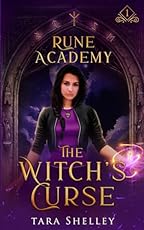Dead Man's Island
Mr Ross lives on an island where no visitors come. He stops people from taking photographs of him. He is young and rich, but he looks sad. And there is one room in his house which is always locked. Carol Sanders and her mother come to the island to work for Mr Ross. Carol soon decides that there is something very strange about Mr Ross. Where did he get his money from? How can a young man buy an island? So she watches, and she listens - and one night she learns what is behind the locked door...
A Gripping Tale of Loss, Redemption, and Discovery
"Dead Man's Island," a part of the Oxford Bookworms Library and authored by John Escott, offers readers a compelling narrative that delves into the complexities of grief, transformation, and the pursuit of hidden truths. This gripping short story, categorized at the Oxford Level 2, proves to be an engaging read for English language learners and those seeking an enthralling tale of mystery and redemption.
The protagonist of this tale is Carol Sanders, a young woman whose life takes a dramatic turn following the tragic death of her father in a plane crash. The narrative skillfully explores the emotional fallout of this loss, portraying Carol's descent into a dark world of drugs and questionable friendships. Escott adeptly captures the challenges and despair faced by Carol, providing readers with a poignant portrayal of her struggles.
The story takes an unexpected twist when Carol's desperate mother decides to relocate to England, accepting a job on a mysterious island. As the narrative unfolds, the island reveals its secrets, and Carol becomes determined to unravel the mysteries that shroud this enigmatic place.
Escott's narrative is characterized by its accessibility, making it an ideal choice for readers at a beginner level (CEFR A2). The carefully controlled vocabulary and straightforward prose contribute to a smooth reading experience, fostering confidence among English language learners.
The setting of the remote Scottish island adds an atmospheric layer to the story, with dangerous cliffs and hidden secrets heightening the suspense. The author skillfully builds tension, keeping readers hooked as Carol embarks on her quest for truth.
The characters, particularly Carol, are well-developed, allowing readers to empathize with her journey from despair to determination. The introduction of the mysterious Mr. Ross adds an intriguing element, leading to a climactic revelation that ties together the threads of the narrative.
"Dead Man's Island" successfully combines elements of mystery, suspense, and a touch of detective work. The book not only serves as an engaging reading experience but also provides valuable language-building exercises. The inclusion of illustrations, glossaries, and before, during, and after reading activities enhances the overall educational value of the book.
In conclusion, John Escott's "Dead Man's Island" is a captivating addition to the Oxford Bookworms Library, offering readers an immersive experience filled with suspense, discovery, and a satisfying resolution. Whether you're an English language learner or a fan of detective stories, this book proves to be an enjoyable and rewarding read. Highly recommended for those seeking an accessible yet thrilling literary journey.
Summary of the story
Carol Sanders is growing up happily in Hong Kong when her favourite pop star, Jake Rosso, and then her father both die. She is very unhappy and starts getting into trouble so her mother takes her back to England. There her mother gets a temporary job as a secretary on a Scottish island although Carol overhears Greta Ross, the interviewer, telling someone on the phone not to worry because they have been out of the country for seven years.
Mrs Sanders is going to be the secretary of Greta’s husband, a businessman who never leaves the island and who doesn’t like visitors. The mysterious Mr Ross is a sad-looking young man with short hair, moustache and glasses.
One day Carol sees a face at the window of the house watching her. Her mother tells her that all the money and property in Mr Ross’s business is in his wife’s name. When Carol accidentally takes a photo of Mr Ross, the gardener takes the film: Mr Ross doesn’t like having his picture taken. Carol sees a half-hidden door in the house and is told sharply that it’s private.
Two nights later, Carol sees Mr Ross come out of the locked room and hide the key. In the morning she goes into the room.
It is full of Jake Rosso memorabilia. Carol realizes that Mr Ross is Jake Rosso. But he has followed her. He tells her that when he was a pop star he caused the death of a young girl. So he faked his own death and then came to live with his family on this island. Carol decides to keep the secret. She needs to begin a new life too. Later she gets a job on a farm but sometimes thinks about the ‘dead man’ on the island.
Background to the story
This is an adventure story which takes us from Hong Kong via London to the Scottish islands; and a progressive accumulation of events – Greta’s phone call, the Keep Out signs as they approach the island for the first time, the face at the window, and so on – build up the mystery until the climax in the room full of Jake Rosso memorabilia when Carol discovers Mr Ross’s true identity.
It is also a story about the emotional development of the teenager, Carol Sanders. At the beginning of the story, she is an ordinary middle class teenage girl growing up in Hong Kong. Then the deaths in fairly quick succession of her pop idol and of her father lead her into unhappiness and a new set of friends which almost gets her into trouble with the police. So she can identify closely with the parallel experience of Jake Rosso (real name James Duncan) who got so involved in drink and drugs that he caused the death of a fifteen-year-old girl; and with his feelings after the car accident which caused her death. Both Carol and Ross have to rebuild their lives as best they can. Carol benefits from the healing influences of the island – healthy open-air work in a beautiful environment, horse riding and swimming, and kind people (who are actually members of Ross’s family) but perhaps above all from the recognition that the problems of Ross – who, as Jake Rosso, she had idolised when she was younger – are more difficult and permanent than her own. She is thus able to learn an important lesson about herself and about other people, to go on to college at the end of the summer and then to a fulfilling job.
How can you read this book?
Click these simple buttons to read this book today.
You may like these books... Buy now!

|

|

|

By Marie, I.D., Marie, I.D. (Paperback)
John Escott, Writer ![]()
Master Storyteller and Literary Craftsman
John Escott, an esteemed writer celebrated for his storytelling prowess, has left an indelible mark on the literary landscape. Born with an innate passion for language and narratives, Escott's journey unfolds as a captivating narrative of dedication and creativity.
Early Years: Hailing from an undisclosed place of origin, John Escott's early years were undoubtedly shaped by an inherent love for words. His upbringing fostered a curiosity for storytelling that would later become the hallmark of his literary contributions.
Educational Odyssey: Escott embarked on an educational odyssey to refine his understanding of language and literature. His academic journey, though shrouded in mystery, undoubtedly laid the foundation for the linguistic dexterity and narrative finesse evident in his works.
Pioneering English Language Teaching: As a luminary in the field of English language teaching, John Escott has not only penned compelling narratives but has also contributed significantly to language education. His works have become instrumental in engaging language learners, seamlessly weaving language acquisition with the art of storytelling.
Authorship Legacy: The essence of John Escott's literary legacy lies in his ability to craft stories that resonate across cultures and captivate readers of varying backgrounds. His portfolio spans a wide array of genres, showcasing a versatile and dynamic approach to storytelling. Whether it be gripping mysteries, heartwarming tales, or educational materials, Escott's penmanship remains a beacon for literature enthusiasts and language learners alike.
Collaborative Ventures: Throughout his illustrious career, John Escott has engaged in collaborative ventures that have enriched the literary landscape. His collaborations have not only expanded the scope of his storytelling but have also contributed to the collective tapestry of global literature.
Global Influence: With a global readership and a reputation that transcends borders, John Escott's influence extends far beyond the confines of his writing desk. His works have become integral components of language education programs worldwide, leaving an enduring impact on learners seeking linguistic proficiency through the magic of storytelling.
Current Endeavors: While specific details about John Escott's current activities remain undisclosed, one can only anticipate more literary gems to emerge from his creative wellspring. As a writer who has consistently pushed the boundaries of conventional storytelling, Escott's current endeavors are awaited with eager anticipation.
In the realm of literature and language education, John Escott stands as a luminary whose words have not only entertained but have also empowered countless individuals on their journey of linguistic discovery. This biography merely scratches the surface of a literary figure whose influence continues to grow, leaving an indelible imprint on the hearts and minds of readers worldwide.





